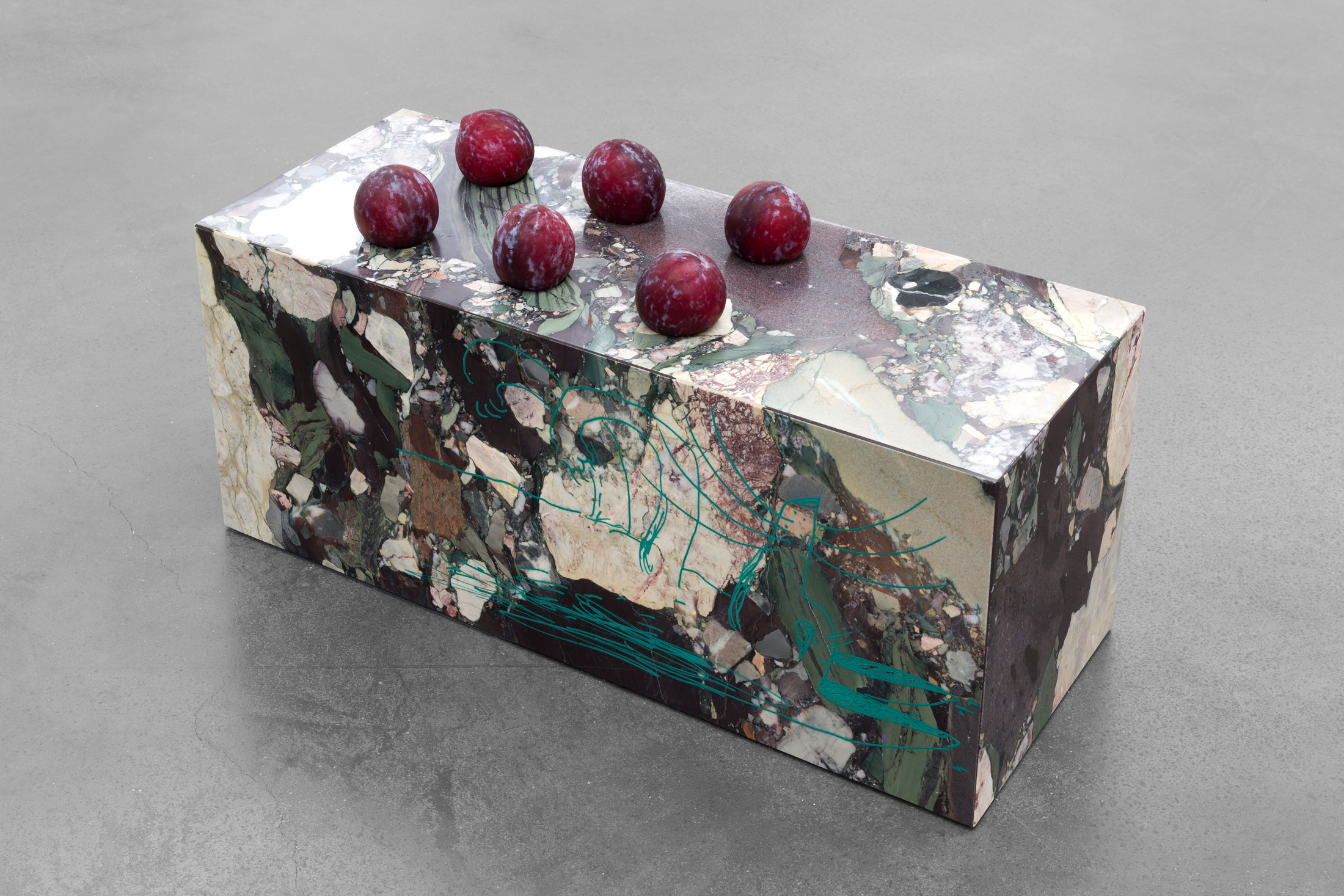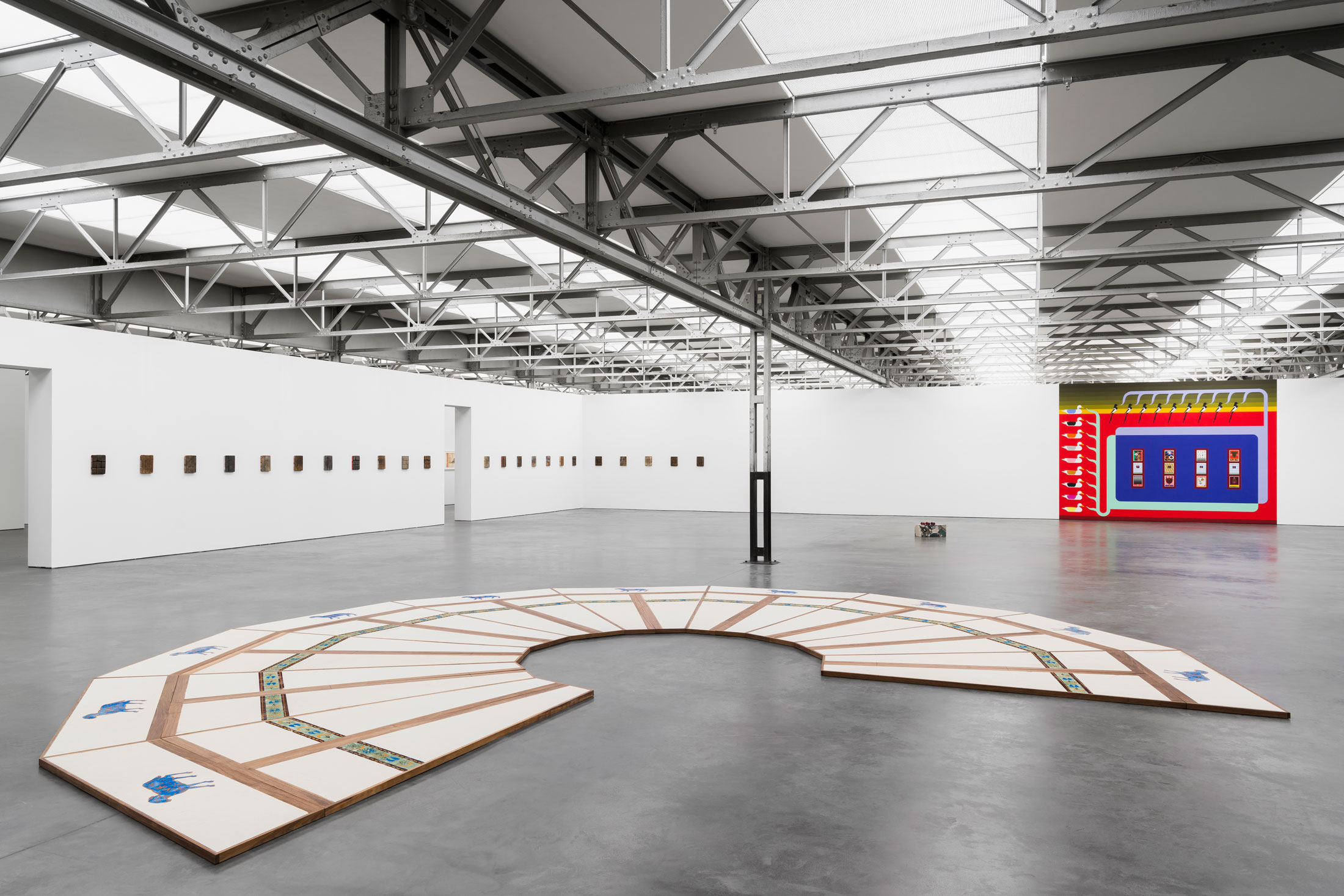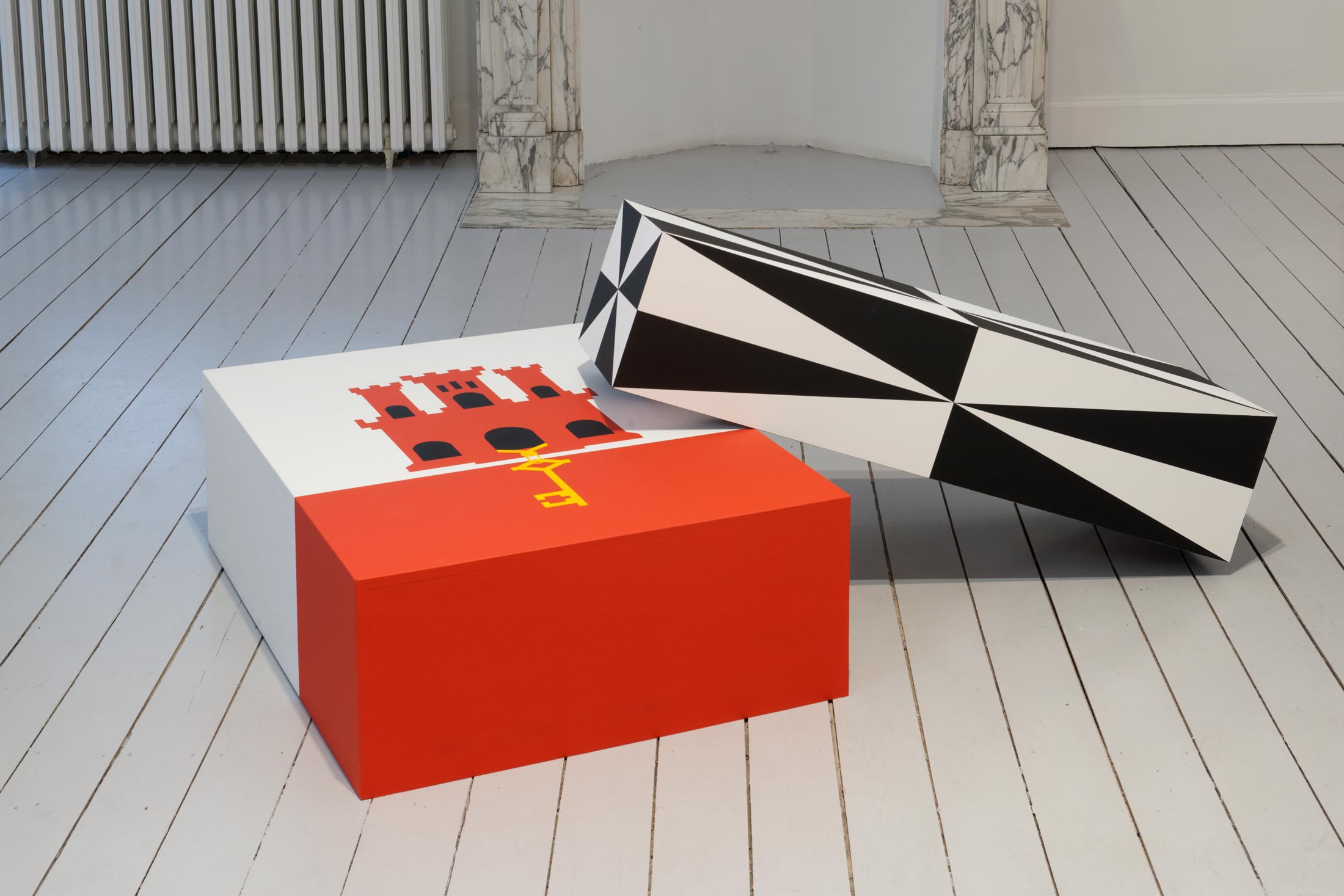Conversation With Kasper Bosmans
In April 2023, we visited Kasper Bosman at his home and studio in Brussels. Our conversation focused on the stories behind his work, process, latest projects, and his background as an artist, including his childhood.
Kasper Bosmans, born in Lommel (Belgium) in 1990, employs storytelling by creating narratives with multiple references from different cultural and historical sources. From an intuitive anthropological approach, he examines contemporary life’s vestiges of local traditions and mythological symbols.
Bosmans has gained recognition for his unique and thought-provoking pieces that explore themes such as cultural identity, tradition, and belief systems. His work often combines elements of the past with contemporary perspectives, creating a multi-layered visual experience.
Art Viewer: From the beginning, your work has been informed with stories, anecdotes, vernacular traditions, mythologies, and precise attention to craft and detail. Could you elaborate on your process for identifying, examining, and working together with these resources?
I developed an interest in, let’s call them, “specialized” or “specific narratives” when I was a youngster. Knowing certain things and reproducing them through talking, drawing, sculpting, or painting. These narratives slowly became the limbs of the monster I dreamt up, an ever-growing Hydra that resembles me more and more. This editorial process is heavily influenced by my environment and ever-changing surroundings. As a small-town person from a small village with less than a thousand people, history, art history, painting, woodcarving, and drawing helped me to express and find myself. To force myself to encounter things that seem to matter intuitively. The other day, I came across a beautiful interview with Phyllida Barlow. In it, she expresses that she enjoys encounters with sculptures in a spatial context because you can walk around them. I love how she brings this heartwarming feeling of discovery to life. A space with an intricately wrought object can be so thrilling that it can feel like a new home. As Federico Fellini said, he never wanted to talk about the process when he was making his films because talking about a film in the middle of production is like talking about a friend you don’t know yet. You are enjoying the discovery of talking to them, so it is hard to define what the process is like.
These visceral encounters with anecdotes or the (sometimes unfinished) objects that represent them seem to be my fuel. These are the moments I try to recreate for my audience, which includes my young, lonely, and closeted self.
That’s why there is an elaborate sequence of stories that slowly show more and more signs of topics that keep on returning. You start seeing head threads through the anecdotes that I have been reproducing over the years, and these anecdotes merit proper translation. And that’s where the crafts come into play. When I have the opportunity to work with a craftsman, designer, or specialist in any field, I always start by telling the entire story. And that really influences them. I need somebody else’s eyes to see if they experience the same thing. You could say that the craftsmen I work with are the first members of the audience.

AV: Tell us about your latest shows and what you have been doing lately.
KB: Funnily enough, I’ve been taking part in two shows dealing with children. One is Imaginary Friends, a group exhibition taking place right now at the Miró Foundation, curated by Patrick Ronse and Martina Millà. The show puts together nine installations of artists who have been active from the nineties up until today. It’s been quite thrilling to deal with children’s dreams and to make art for them. The first contemporary artwork that really touched or moved me was made by the late Jimmie Durham. I must have been a young teenager. It was a few years after seeing the work that I understood it was a pivotal moment for me.
For Imaginary Friends, I was trying to find a way to make art accessible to youngsters, or more accurately put: I was trying to revisit the delayed aha-erlebnis I had with the Durham sculpture. Therefore, working with history and playing with historical aesthetics like the camp beauty of medieval relic holders, the drab directoire stripes of Maximilien de Robespierre’s suits, or the warm glow of Catherine the Great’s Amber Room, but also contemporary logos and a color scheme that translates well on your mobile phone screen. I always like to show that it’s easy for other people to make my work. There’s an illustrative quality, which is very important. And how kids formulate questions is quite refreshing. They are a very good audience to work with. Whenever I see children having a hard time keeping their grimy fingers off my artwork, I think I’ve succeeded in making an alluring and interactive object or installation.

AV: Speaking of childhood, how old were you when you realized you wanted to be an artist?
KB: I’ve always been interested in art. I always wanted to be an artist. Kunstschilder, in Dutch, translates to art painter. I was thinking of people like Rubens, a big entrepreneur who makes lavish paintings that are monumental and depict life and elements of society, but also Catholic mysteries, complex, heavily wrought, large dramatic objects. It was later on, when I saw a piece by Jimmy Durham, that I started to develop an interest in contemporary art. But I vividly remember being six and having to stand on a first-row chair in church and say what my future occupation would be. I stood on my chair in a cute little suit with golden buttons and said, “I want to be an artist painter.” All heads in the church were bobbing with laughter. They thought it hilarious that I didn’t want to be a football player, doctor, priest, farmer, shopkeeper, or a chemist. It only motivated me more to be an artist. I never really doubted what I wanted my activity to be: to make objects that are considered art. Although, my interpretation of what it entails has changed dramatically over the years and keeps on evolving.


AV: You have mentioned before that your work has always been based on a queer system. Please let’s talk about that.
KB: A few years ago, I came across a piece of writing by architecture theorist Aaron Betsky. In his book ‘Queer Space’ he described the elements that constitute the closet, the safe space or ephemeral infrastructure or salon for you and your chosen family. I’m paraphrasing him quite liberally, of course, but one step in his description of the construction of that space is the following: personally chosen elements from society are arranged by you in a subjective manner in order to portray yourself to make a mirror with a multitude of purposes. You can have conversations with like-minded people, seduce them, epilate an eyebrow, and laugh at your (spitting) image. The idea that the main ingredient for a queer mirror is fragments of a hostile society surrounding us made me think of my production process of the last few years. It helped me to give a place to the editorial aspect of my practice. I have been constantly making mirrors and using my work to seduce stunning minds and bodies.
Seneca stated that the mirror was a by-product of weapon smithing. The reflection in swords inspired smiths to polish iron or copper sheets taken to the battlefield camps. In the privacy of their tents, soldiers started combing their own curls. The trustworthy gaze of lovers and loved ones that used to assist at the battlefield toilette, that would comb the curls in the tent, were replaced by these polished sheets of frigid metal. Seneca says the invention of the mirror had far more severe consequences than the invention of the sword.
I’m glad Aaron Betsky and Narcissus gave me something more potent and powerful than a sword or the nuke. The magical contraption makes you see things other people won’t see so quickly. In the past, when asked: “Where do you find your weird stories?” I would reply with the name of my hometown, school, and parents’ background. Today, it makes more sense to say that I’ve had to find love in the margins, in a wink, in insinuation. Society isn’t made for queer people, au contraire, we don’t get prominent examples for the lives we can, or want to live, so we have to harvest all of our information in a society that only likes us when we perform. When you see an exhibition of mine, there’s an indigestible amount of information on display. It takes me hours to express everything because it’s complex, our world is complex, and so is love.

AV: I see in your work a strong mastery of craft and materials. I can see an influence from the internet and the digital, but it is more in terms of color display, the variety of sources, the fragmentation in imagery, and so on. Can you tell us about how you produce your artwork?
KB: In shared production, an object is an episode. I like to work with the same producers, and their standards influence me. Working for a long time with the same craftsmen has proven to be beneficial. We can align our ambitions and develop together. For example, the company Emaillerie Belge has been producing work for me for a very long time. The limits certain materials have can be quite inspiring. Mauve, purple, and pink shades are very difficult to obtain in vitreous enamel, which challenges me to rethink my palette and makes me enjoy the use and display of these colors in other materials. That’s how I end up with purple bronze patinas and paintings made entirely out of pink hues. The amount of cold colors we (or they, rather) can achieve to produce in enamel is seemingly unlimited, whole families of shades of lime, grass, pistachio, sage, pine, and Veronese green, or a very broad range of dark and grumpy blues in an unimaginable range of depth. Both color families are very difficult to simulate on my computer screen and don’t seem so keen to be realistically reproduced in digital photography. That’s why I like to use them in big artworks, you can barely take a snapshot, but they swallow you whole in real life.

AV: Animals are featured extensively in your work. You use them iconographically and through materials like bird feathers. Tell us about your interest in animals in relationship with your work.
KB: Our relationship with animals has fascinated me since childhood. I love observing people looking at animals. We have power over animals. When I weighed only 30 kg, I could control a 250kg horse by just using my legs.
One day, I saw an elderly photographer stalking a horny Tapir in the Amsterdam Zoo with a hugely-lensed camera. The photographer was so invested in the pictures, nose nearly merging with the lens, that didn’t notice the tapir spraying them with an enormous amount of piss he pushed from his bladder with tremendous ferocity. A cloudy jet stream soaked his shoes and trousers from a great distance. It says a lot about how animals care about our investment, how we don’t realize what matters, nor how aggressive we are.
We have been projecting our world vision and philosophical convictions on nature for a very long time (like in physicotheology). A good example from Physiologus (a medieval book attributing absurd religious qualities to nature) is a regal creature called the ermine, a creature used to explain the immaculate conception of the holy virgin. She was impregnated by the word of god, so the ermine conceives through its ears. Just as the miraculous birth of Christ keeps the virgin intact, the ermine gives birth through its mouth.

AV: Besides animals, the idea of landscape is also very present. You work with landscape on a symbolic level as a space where your narratives take place. Is this an ideal and symbolic space like the space in medieval paintings, or is it contextualized to a specific place? Tell us about how you worked with the landscape in your work in general.
KB: I had a relationship with a man who would always go for the highest point he could find. And then he would climb up. He always wanted to have vantage points and to be on the top floor of everything. I’ve always had the opposite reflex. I want to go under the bridge, underwater. I always had this faint attraction to the dark, slowly moving fresh water, where you can see the fish feeding at the bottom. An archaeologist once told me that the earliest bronze age settlements would combine both things, fresh water and a vantage point. I thought it’d be for drinking, but findings indicate there was a spiritual purpose too.
I sometimes get complaints that I make too many floor pieces. I can’t help it, but I have to make pieces that lie on the floor. I want you to bend over or squat. I truly like sculptures on the floor. And it’s not because of the minimalists.
In the flat fields of my home region, the majority of towns have a triangular square because, at night, Y-, T- or cross sections of the roads were convenient nightly meeting points for the shepherds and their sheep. Slowly but surely, infrastructures and houses started to be erected around these simple squares called ‘Heerdgang’. Quite literally, that word means ‘going home,’ although the word ‘heerd’ is still used in my hometown dialect to describe the floor of one’s home, the surface you get invited or disinvited to. It somehow seems to make sense to make floor pieces. You’re welcome.
*This interview is a transcription of our conversation with the artist in his Brussels apartment and studio in April 2023.
